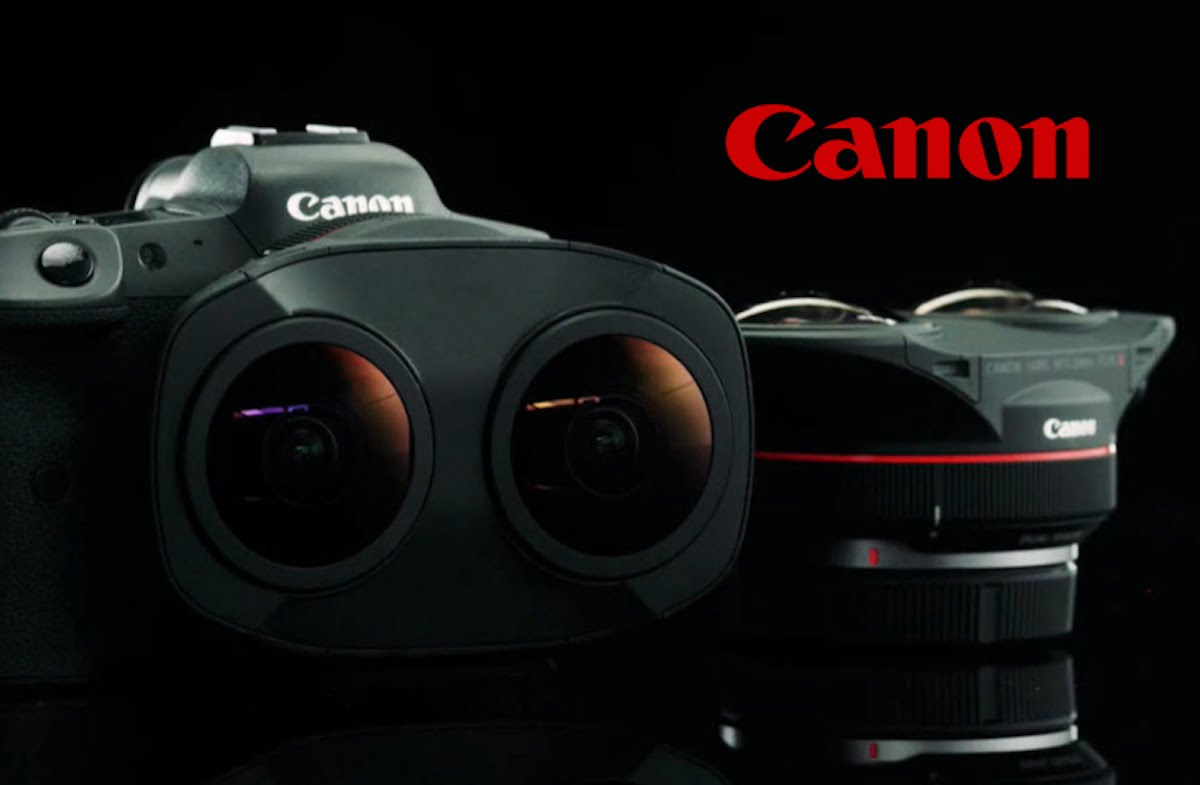Canon VR Lens: Watch first 3D 8K footage on Quest 2

In October, Canon introduced a high-end VR lens. Now there is first footage to marvel at.
The double lens was developed for the professional camera Canon EOS R5 and delivers up to 8.192 by 4.096 pixels the optimal video pixel count for the Meta Quest 2.
The two lenses are spaced 60 mm apart, which is roughly equivalent to human eye relief. They provide a stereoscopic 3D effect and a field of view of 190 degrees. With the Canon RF 5.2 mm F2.8 L dual fisheye lens, both videos and photos can be taken.
In a YouTube video, which can be viewed using the VR app YouTube VR in the Meta Quest (2), YouTuber Hugh Hou shows what the VR lens is capable of.
First test shots with Canon's VR lens
Hou is a YouTube creator, VR enthusiast, and hardware tester specializing in immersive movies. On his YouTube channel he offers tutorials, tips & tricks for budding VR filmmakers and regularly publishes new 180- and 360-degree films. Hou is also represented on Oculus TV with immersive films.
In the aforementioned YouTube video, the independent tester presents his first shots with Canon's VR lens. The image is impressive regarding contrast range and in low-light scenes but is nowhere near as sharp as you might expect from a camera and lens in this price segment.
Better to watch on Oculus TV than Youtube
To qualify, it has to be said that while YouTube is the most widely used platform for immersive movies, it's certainly not ideal for presenting VR footage in high resolution and quality.
The YouTube video is compressed and is in 4K resolution, half of the source material. The good news is that Hou has submitted the video to Oculus TV and expects a release shortly after Christmas. On Meta's platform, you can download and watch immersive movies at 8K resolution. Hou writes that the Oculus TV version looks "much better."
There are many reasons why immersive movie formats and corresponding cameras have not yet reached the mainstream. On the one hand, it is not worthwhile for manufacturers to offer specialized VR cameras since the VR market is still small.
On the other hand, there are problems with video platforms that offer no or only limited options for streaming high-resolution VR videos (8K+). And then you also need suitable playback devices: The Meta Quest 2 is cheap and easy to use, but its LC displays (keyword: contrast) are not ideal for viewing high-quality film and photo material.
Canon's solution is also only intended for professional users: the Canon EOS R5 including VR lens costs around 6,000 euros. That is beyond the budget of normal consumers.
I will update this article as soon as the Oculus TV version is released. More videos and first tutorials from Hou should follow soon.
Note: Links to online stores in articles can be so-called affiliate links. If you buy through this link, MIXED receives a commission from the provider. For you the price does not change.